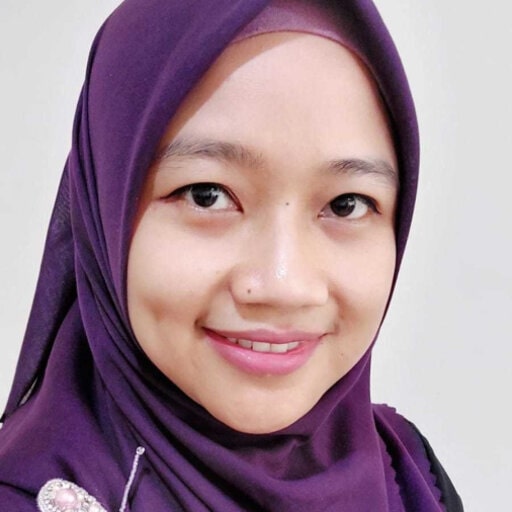Knowledge Determinant about Contraceptions on Young Mother in Kupang
Downloads
Pendahuluan: Prevalensi kehamilan usia muda pada ibu remaja di Kupang yang tinggi meningkat, sehingga diperlukan informasi dan penyuluhan kesehatan yang tepat serta cara penggunaan kontrasepsi. Tujuan penelitian ini adalah untuk mengetahui determinan pengetahuan tentang kontrasepsi pada ibu muda di Puskesmas Pasir Panjang Kupang Nusa Tenggara Timur.
Metode: Penelitian ini menggunakan desain cross sectional. Jumlah populasi 144 dan diperoleh 71 sampel dengan teknik simple random sampling. Variabel bebas dalam penelitian ini adalah umur, pendidikan, informasi, dan pengaruh orang tua, sedangkan variabel terikat dalam penelitian ini adalah pengetahuan. Data diperoleh dengan kuesioner dan dianalisis menggunakan chi-square dan regresi ordinal.
Hasil: Ada hubungan umur (p = 0,001), pendidikan (p = 0,000), informasi (p = 0,000) dengan pengetahuan, namun tidak ada hubungan antara pengaruh orang tua (p = 0,099) terhadap kontrasepsi pada ibu muda.
Kesimpulan: Bertambahnya usia dewasa, pendidikan tinggi, penyebaran informasi yang tepat dapat meningkatkan pengetahuan responden tentang kontrasepsi. Diharapkan perawat di puskesmas dapat memberikan informasi yang sesuai tentang kontrasepsi di lingkungan pendidikan formal dan selanjutnya peneliti dapat melakukan intervensi pendidikan kesehatan tentang kontrasepsi yang mudah dipahami remaja dan melakukan penelitian etnografi terkait perilaku remaja yang menikah di Indonesia. remaja mereka dan mengembangkan penelitian ini berdasarkan budaya lokal
Asut, O., Ozenli, O., Gur, G., Deliceo, E., Cagin, B., Korun, O., ... Cali, S. (2018). The knowledge and perceptions of the first year medical students of an International University on family planning and emergency contraception in Nicosia (TRNC) 11 Medical and Health Sciences 1117 Public Health and Health Services. BMC Women's Health, 18(1), 1–11. https://doi.org/10.1186/s12905-018-0641-x
Badan Pusat Statistik, & UNICEF. (2016). Kemajuan yang Tertunda : Analisis Data Perkawinan Usia Anak di Indonesia. Unicef Indonesia, (Analisis Data Perkawinan), 1–100. https://doi.org/978-978-064-963-6
BKKBN. (2018). Peran bkkbn di balik gerakan penanggulangan Stunting. Jurnal Keluarga, 1(1).
BPS. (2017). Penduduk Indonseia. Retrieved September 2, 2018, from https://www.bps.go.id/pencarian.html?searching=jumlah+penduduk&yt1=Cari
Brito, M. B., Alves, F. S. S., Souza, M. Q., & Requií£o, S. R. (2018). Low Level of Knowledge of Contraceptive Methods among Pregnant Teens in Brazil. Journal of Pediatric and Adolescent Gynecology, 31(3), 281–284. https://doi.org/10.1016/j.jpag.2017.12.008
Carvalho, F., Medeiros, I. De, Faria, C., Cotu, D., Will, E. P., Neves, E., & Pontes, T. (2017). Teenage pregnancy - A study in Sí£o Tomé and Príncipe. International Journal of Adolescent Medicine and Health, 0(0), 1–5. https://doi.org/10.1515/ijamh-2017-0088
Fall, C. H. D., Sachdev, H. S., Osmond, C., Restrepo-Mendez, M. C., Victora, C., Martorell, R., ... Stein, A. (2015). Association between maternal age at childbirth and child and adult outcomes in the offspring: A prospective study in five low-income and middle-income countries (COHORTS collaboration). The Lancet Global Health, 3(7), e366–e377. https://doi.org/10.1016/S2214-109X(15)00038-8
Fancy, K. (2012). Because I am a Girl Learning for life.
Gage, A. J. (2013). Association of child marriage with suicidal thoughts and attempts among adolescent girls in ethiopia. Journal of Adolescent Health, 52(5), 654–656. https://doi.org/10.1016/j.jadohealth.2012.12.007
Gatny, H., Kusunoki, Y., & Barber, J. (2018). Pregnancy scares and change in contraceptive use. Contraception, (March 2008), 6–11. https://doi.org/10.1016/j.contraception.2018.07.134
Kgosiemang, B., & Blitz, J. (2018). Emergency contraceptive knowledge, attitudes and practices among female students at the University of Botswana: A descriptive survey. African Journal of Primary Health Care & Family Medicine, 10(1), 1–6. https://doi.org/10.4102/phcfm.v10i1.1674
Lewin, A., Mitchell, S., Beers, L., Schmitz, K., & Boudreaux, M. (2016). Improved Contraceptive Use Among Teen Mothers in a Patient-Centered Medical Home. Journal of Adolescent Health, 59(2), 171–176. https://doi.org/10.1016/j.jadohealth.2016.04.007
Notoatmodjo. (2010). Ilmu Perilaku Kesehatan. Jakarta: Rineka Cipta.
Raj, A. (2010). When the mother is a child: The impact of child marriage on the health and human rights of girls. Archives of Disease in Childhood, 95(11), 931–935. https://doi.org/10.1136/adc.2009.178707
Wawan, A., & Dewi, M. (2010). Teori dan Pengukuran Pengetahuan. Yogyakarta: Nuha Medika.
White, A. L., Mann, E. S., & Larkan, F. (2018). Contraceptive knowledge, attitudes, and use among adolescent mothers in the Cook Islands. Sexual and Reproductive Healthcare, 16(December 2017), 92–97. https://doi.org/10.1016/j.srhc.2018.02.004
Yaya, S., Uthman, O. A., Ekholuenetale, M., & Bishwajit, G. (2018). Women empowerment as an enabling factor of contraceptive use in sub-Saharan Africa: a multilevel analysis of cross-sectional surveys of 32 countries. Reproductive Health, 15(1), N.PAG-N.PAG. https://doi.org/10.1186/s12978-018-0658-5
Copyright (c) 2020 Novy Loudoe, Ferry Efendi, Rista Fauziningtyas

This work is licensed under a Creative Commons Attribution 4.0 International License.
1. The journal allows the author to hold the copyright of the article without restrictions.
2. The journal allows the author(s) to retain publishing rights without restrictions.
3. The legal formal aspect of journal publication accessibility refers to Creative Commons Attribution (CC BY).


















